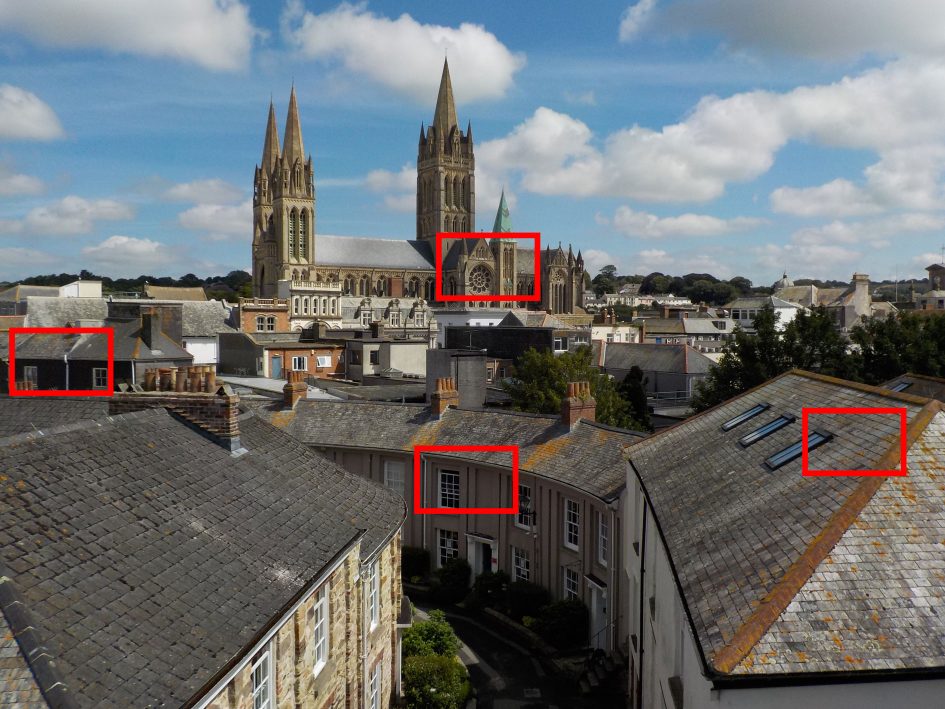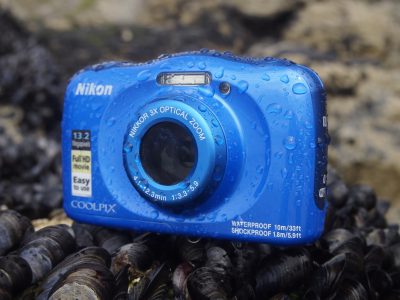Nikon Coolpix W100 review
-
-
Written by Ken McMahon
Quality
To test real-life performance, I shot this scene with the Nikon COOLPIX W100 and the Nikon COOLPIX W300 using their best quality JPEG settings and at their base 125 ISO sensitivity setting. Both cameras were mounted on a tripod and image stabilisation was disabled. On the COOLPIX W100 both the ISO and exposure are automatically set and in this case it selected 125 ISO. The sensitivity on the COOLPIX W300 was manually set to 125 ISO and auto mode was selected for the exposure. The COOLPIX W100 selected an exposure of 1/2000 at f3.3 and for the COOLPIX W300 it was 1/1000 at f4.2 – effectively giving the same exposure.

As the COOLPIX W100 has a narrower 30mm equivalent wide-angle, I zoomed the COOLPIX W300 in to match the angle of view. The COOLPIX W100 has a sensor that is physically smaller and has a lower pixel count – 13 Megapixels, compared with 16.4 Megapixels on the COOLPIX W300, so the W100’s crops show a larger area with smaller detail. As usual, the crops below are taken from the areas marked in red above.
Casting an eye down the row of crops from the COOLPIX W100 on the left, one thing stands out and that is the clumpy nature of the image detail. The only crop where it isn’t very obvious is the second one, but even here there’s not much fine detail in the roof or stonework of the cathedral. The reason for this is noise – or the processing that the W100 does to try and deal with it. It’s an inevitable consequence of the COOLPIX W100’s small sensor – even at its lowest 125 ISO sensitivity setting noise and noise processing means you lose some image detail. That said, it’s only really going to be an issue when viewing images on a big screen or when making prints that are around 10 x 8 inches or larger. If you’re just looking at pics on a phone, tablet, or even a laptop, its not going to make too much difference.
Compared with the crops from the 13 Megapixel COOLPIX W100, those from the COOLPIX W300 are sharper and more detailed overall. It could be argued that the first crop from the COOLPIX W100 looks marginally more detailed than the W300 one, but the W100 has a different set of problems. It’s an interesting comparison because the W100 has a lower pixel count, but its 1/3.1in sensor is also physically smaller – about the same size as the sensor in some phones and around two thirds the surface area of the 1/2.3in sensor in the W300 (and most other compacts). The result is much noisier crops with a clumpiness that obscures image detail right across the frame.

Above left: Nikon COOLPIX W100 at 4.1mm (30mm equivalent) f3.3 125 ISO.
Above right: Nikon COOLPIX W300 at 5.6mm (31mm equivalent) f4.2, 125 ISO.

Above left: Nikon COOLPIX W100 at 4.1mm (30mm equivalent) f3.3 125 ISO.
Above right: Nikon COOLPIX W300 at 5.6mm (31mm equivalent) f4.2, 125 ISO.

Above left: Nikon COOLPIX W100 at 4.1mm (30mm equivalent) f3.3 125 ISO.
Above right: Nikon COOLPIX W300 at 5.6mm (31mm equivalent) f4.2, 125 ISO.

Above left: Nikon COOLPIX W100 at 4.1mm (30mm equivalent) f3.3 125 ISO.
Above right: Nikon COOLPIX W300 at 5.6mm (31mm equivalent) f4.2, 125 ISO.
Check prices on the Nikon Coolpix W100 at Amazon, B&H, Adorama, or Wex. Alternatively get yourself a copy of my In Camera book or treat me to a coffee! Thanks!




